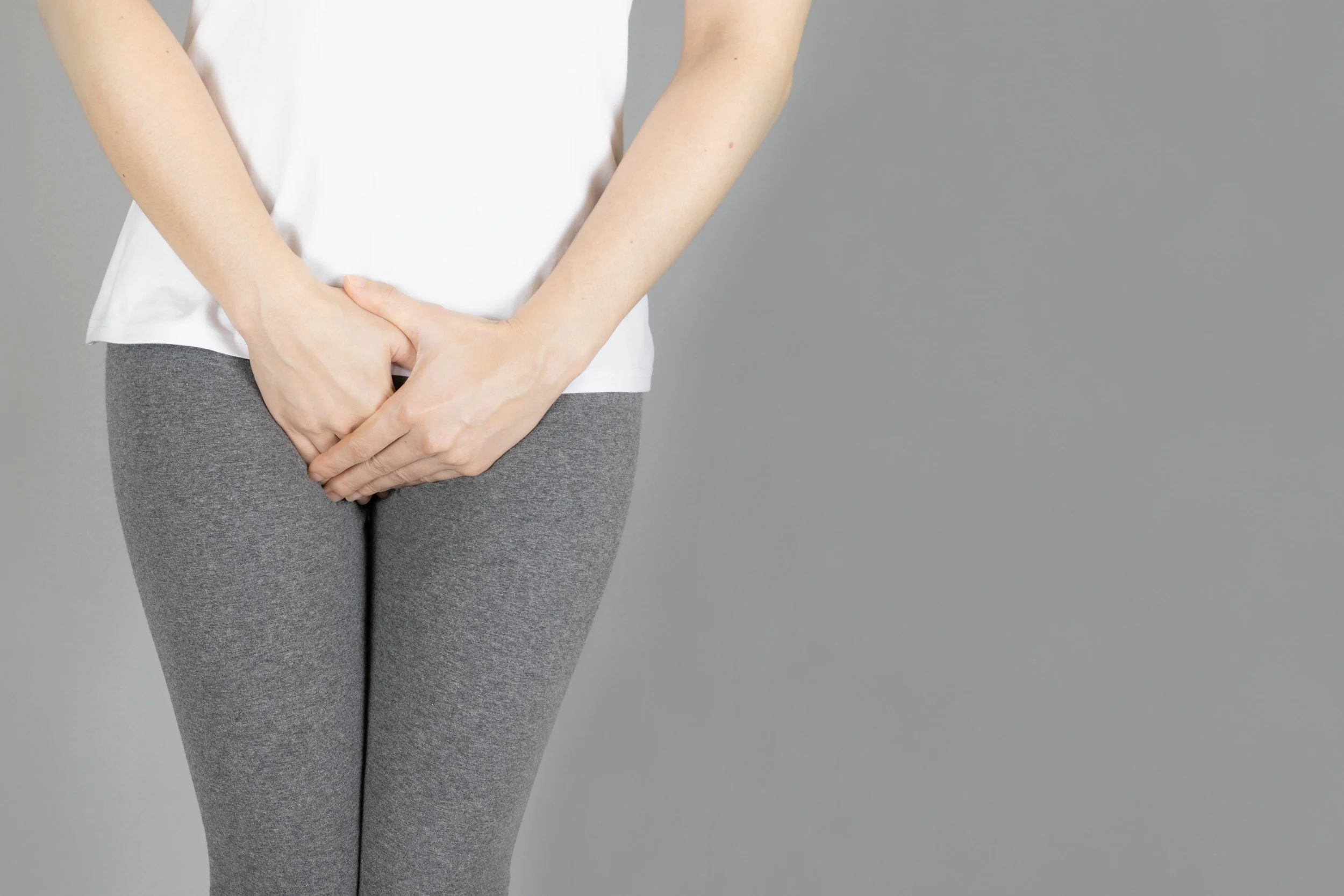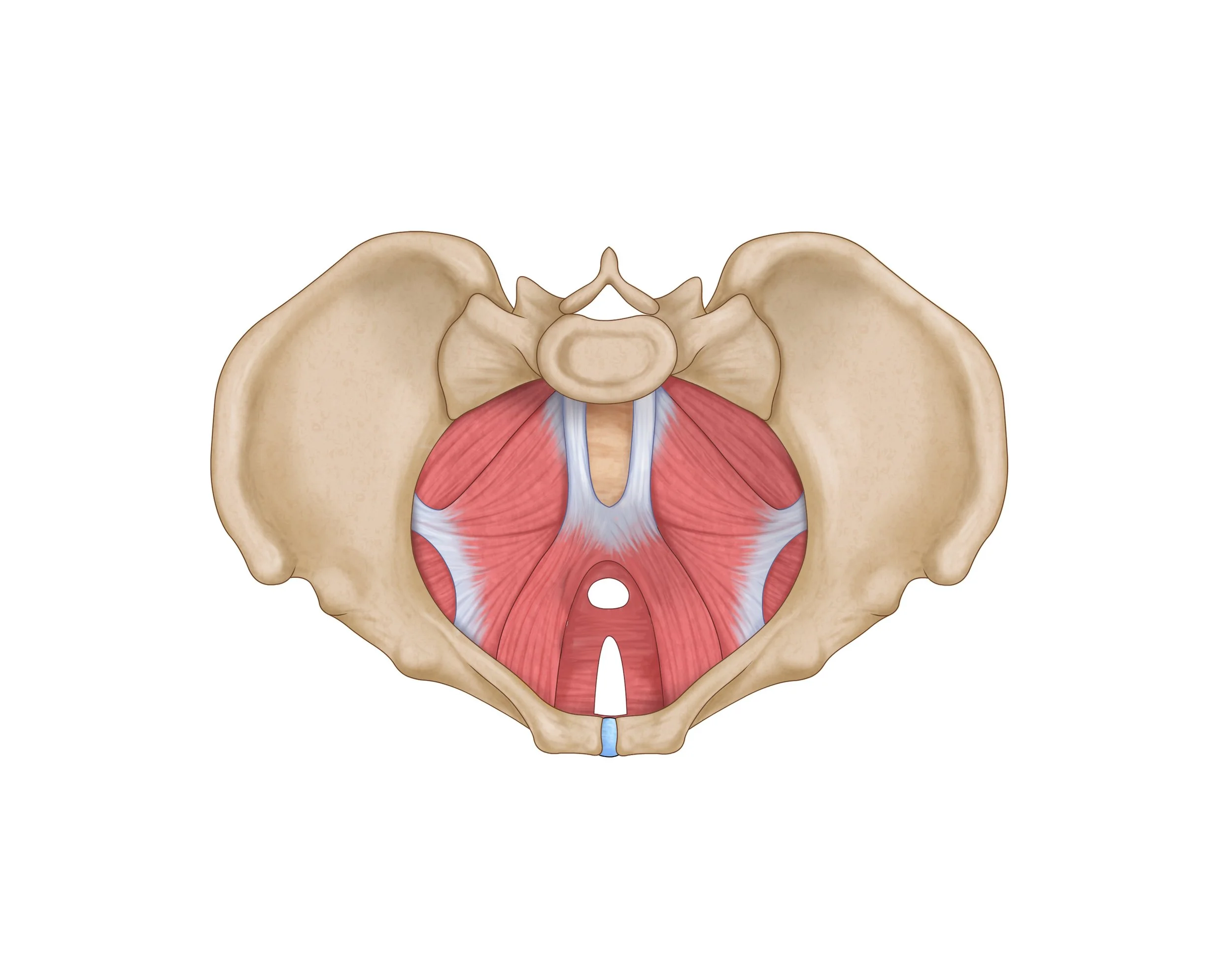Pregnancy & Postpartum Incontinence
The Pelvic Floor An anatomical review
The pelvic floor consists of several layers of muscle contained within the pelvis that are designed to support the abdominal and pelvic organs, allow for proper bowel and bladder voiding, sexual activity, and child birth. Just like any other muscle in the body, we can experience issues from these muscles being too weak, too short, too long, overactive, or underactive. However, pelvic floor muscles can be rehabbed similarly to our other muscles as well. For example, if I strain a muscle in my leg, I’m going to work on getting the injured muscle and the surrounding area stronger, improve muscle length, and activate at the appropriate times. The pelvic floor muscles function in the same way as other muscles in our body, and need similar attention if there is pain or dysfunction.
“More than a third of pregnant women experience involuntary urine leakage during the second and third trimesters, and a third leak during the first three months after delivery. In addition more than 80% of postpartum women who experience SUI symptoms during pregnancy may continue to experience stress incontinence without treatment.”
view from above
When do women experience pelvic floor dysfunction?
Women are more likely to experience pelvic floor dysfunction when pregnant, during labor, and postpartum, as their pelvic floor muscles undergo large changes with carrying extra load from the baby. We commonly see that pelvic floor muscles are weak or underactive after being stretched throughout pregnancy. Women often notice weakness in their pelvic floor when they experience leaking (urinary incontinence) when coughing, sneezing, lifting their baby, jumping, or running. It is also common to see low back pain accompany incontinence, as there is a close relationship with the pelvic floor and core muscles. If one or both of these muscle groups are underperforming, it may result in reduced stability and control at the low back.
Fortunately, we can address urinary incontinence related to pregnancy with physical therapy. Research has found that it is best to complete pelvic floor muscles both during pregnancy and throughout the postpartum period, and that by completing pelvic floor exercises throughout pregnancy, we can also reduce rates of low back pain during the 3rd and 4th trimesters.
“If you are experiencing Pelvic Floor Pain or Incontinence you should seek out a specialist to help you return back to being yourself.”
Are Kegel Exercises the Right Choice for Pelvic Floor Dysfunction?
Historically, women (and men) have been prescribed the kegel exercise for pelvic floor dysfunction. The kegel exercise is performed by contracting the pelvic floor like you’re going to stop the flow of urine. While this is still a component of pelvic floor training, depending on the specific times that someone is experiencing incontinence, we may need to practice turning those muscles on and off quickly, or incorporating longer isometric holds. Pelvic floor exercises can also be incorporated into exercises that are more functional, including breathing, lunges, squats, core exercises, jumping etc. However, despite its known benefits, pelvic floor strengthening may not be appropriate if someone is experiencing pelvic pain, difficulty eliminating bowel or bladder, or constipation. As such, it is important to be evaluated by your physical therapist to ensure proper exercise prescription.
If you are experiencing low back pain or incontinence throughout your pregnancy or postpartum, reach out to a physical therapist. We have several therapists at LWPT specializing in women’s health including:
AUTHOR:
Kerri Smith, PT, DPT, CFSC
LWPT Kirkland Physical Therapist
CONTRIBUTORS:
Dr. Lauren Vernese, DO
Swedish Sport & Spine Physician
Ben Wobker, PT, MSPT, CSCS, CFSC, SFMA
Founder & Director Lake Washington Physical Therapy
MOre Blogs
MORE WEBINARS
References:
Boyle, R., Hay-Smith, E. J., Cody, J. D., & Mørkved, S. (2012). Pelvic floor muscle training for prevention and treatment of urinary and fecal incontinence in antenatal and postnatal women. Cochrane Database of Systematic Reviews, 10, CD007471. doi: 10.1002/14651858.CD007471.pub2
Hagen, S., Stark, D., Glazener, C., Sinclair, L., & Ramsay, I. (2009). A randomized controlled trial of pelvic floor muscle training for stages I and II pelvic organ prolapse. International Urogynecology Journal, 20(1), 45– 51. doi: 10.1007/s00192-008-0726-4
Okido, M. M., Valeri, F. L., Martins, W. P., Ferreira, C. H. J., Duarte, G., & Cavalli, R. C. (2015). Assessment of fetal wellbeing in pregnant women subjected to pelvic floor muscle training: A controlled randomized study. International Urogynecology Journal, 26(10), 1475–1481. doi: 10.1007/s00192-015-2719-4
Price, N., Dawood, R., & Jackson, S. R. (2010). Pelvic floor exercise for urinary incontinence: A systematic literature review. Maturitas, 67(4), 309–315. doi: 10.1016/j.maturitas.2010.08.004
Reilly, E. T. C., Freeman, R. M., Waterfield, M. R., Waterfield, A. E., Steggles, P., & Pedlar, F. (2014). Prevention of postpartum stress incontinence in primigravidae with increased bladder neck mobility: A randomized controlled trial of antenatal pelvic floor exercises. British Journal of Obstetrics & Gynaecology, 121(Suppl 7), 58–66. doi: 10.1111/1471-0528.13213











